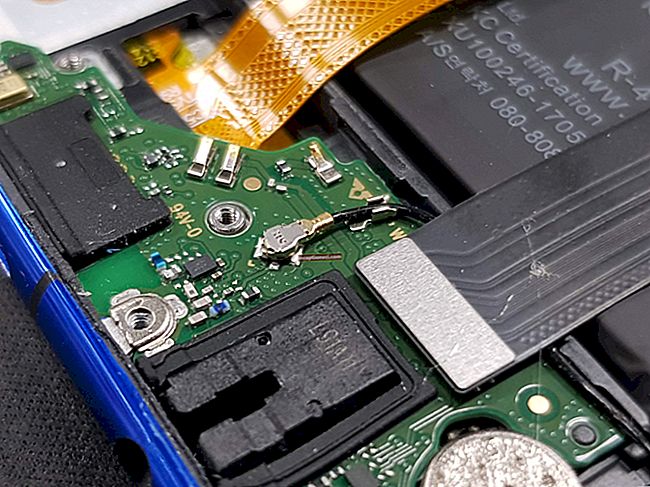Canon EOS 5D Mark II review
Introduction
Almost three years after the release of the popular Canon EOS 5D Mark, the manufacturer has updated the beloved camera with the release of the long-awaited Canon EOS 5D Mark II. Its predecessor was the first 35mm full frame DSLR camera at an "affordable" price point, and this camera was attractive to photography enthusiasts and professional users looking to use the true focal length of their lenses. The new 5D Mark II, although very similar in appearance to the EOS 5D, but in the technical aspect, the camera has received some improvements. The main features of the camera are a 21.1 megapixel full-frame CMOS sensor and the ability to record video with a resolution of 1920p. Plus an expanded ISO range from 50-25600, exceeding the original 5D range (50-3200), a large 3-inch 920K-dot LCD screen, Live View mode, built-in dust cleaning and continuous shooting speed 3. 9 frames per second.
Design and use
The camera looks almost identical to its predecessor, it has exactly the same dimensions 152 x 113.5 x 75 mm, and the same weight 810g. The body of the 5D Mark II is made of magnesium alloy, which should make it stronger and more durable than camera bodies made of plastic. The most significant design flaw on the 5D Mark II is the rubber cover for the optional power supply. It attaches so poorly that it will take you five minutes to lose it, even if you are very careful. There are areas on both sides of the body for easy grip of the camera while shooting. And the back panel has a special place for the thumb, which allows you to hold the camera from behind. Due to the design of the grip handle, the 5D Mark II is ideal for all users, even if they have a large hand. As with other semi-pro cameras, the Canon EOS 5D Mark II has two control wheels. Small at the top of the grip, and large at the back of the camera. The "Speed Dial" disc is common to all high-end Canon cameras. The control with this disk is somewhat unusual compared to the standard controls, but you will quickly get used to it. The Speed Dial takes up the space where a joystick would normally be, which meant that Canon had to turn on the extra small joystick on the back of the camera to navigate the menus. The joystick works well enough, but it's not the usual four-way joystick we're used to seeing on all cameras. With the 5D Mark II, Canon expanded the joystick's capabilities. Pressing a controller opens the quick selection screen. Depending on the shooting mode, the Quick Select screen allows you to set various parameters on the camera screen, using the joystick to navigate through the options. The quick selection is especially well suited for beginners or for shooting with a tripod.

On the top of the 5D Mark II, there is a large monochrome LCD display that displays information about the current shooting settings. There are three buttons next to it, each of which is responsible for the choice of two functions. After pressing a button, the corresponding setting can be selected by turning the control wheel. Memorizing the functions for which each button is responsible takes some time, but subsequently using six settings at once during shooting will help you achieve a high speed of parameter change, and you will never miss a good shot. Right there you will find the fourth button, it is slightly smaller than the previous ones, which is responsible for the backlighting of the monochrome screen.
As mentioned earlier, the camera is equipped with two LCD screens: a 3-inch color one on the back and a small one on the top of the camera. On cheaper cameras, the screen on the back is responsible for all functions, but on this model, all camera settings are visible from the top on a smaller screen. That is, when shooting with the viewfinder, you can turn off the rear screen, thereby conserving battery power. In addition, this allows you to achieve greater speed when shooting, because all the main parameters can be changed, following only the readings of the small screen.

On the back, most of it is occupied by a new large 3-inch screen. It has been significantly improved over its predecessor, reaching a fantastic 920,000 dots, allowing you to judge the critical sharpness of your photos on the LCD screen. It is also worth noting that the manufacturer has also updated the viewfinder in the camera, the scene coverage offered by the new viewfinder is now 98%, which is 2% more than its predecessor.
Like most DSLRs, the EOS 5D Mark II offers the user a standard set of manual and semi-automatic shooting modes. Selections made with the mode dial. On it you will find: Program Mode, Aperture Priority Mode, Shutter Priority Mode and Fully Manual. Canon also offers two automatic shooting modes for newbies. Fully Automatic (marked in green on the disc) and Creative Auto (CA), the latter allowing you to change a few key parameters using the LCD screen and a simple system of sliders to change values.
When operating in manual and semi-automatic modes, users have access to ISO settings from 50 to 25,600. This wide range of ISO sensitivity allows you to shoot in almost any lighting conditions. Therefore, the need to use a flash will simply disappear, probably based on this, the manufacturer did not equip the camera with a built-in flash. You can also choose one of three autofocus modes (One Shot, AI Focus and AI Servo) and six preset white balance values. When shooting with the viewfinder, it displays all the key information.
The camera has a 9-point autofocus system, in addition, you can use 6 auxiliary AF points.

The menu system is similar to most menus in the EOS family, using a simplified tab structure that can be navigated using the Click Wheel. The organization of the menu is presented in the form of 9 colored horizontal tabs with sub-items in each of them. This intuitive system provides quick and easy access to various parameters. You can even customize your own personal menu page for quick access to frequently used settings via the My Menu tab.
An important feature of the model is the lack of a built-in image stabilization sensor. The image stabilization system is organized through lens shift in the lens. This of course limits the number of lenses used, but offers the slight advantage of showing a stabilizing effect through the viewfinder. Manufacturers Canon and Nikon claim that the lens-based Anti-Shake system works better.
The EOS 5D Mark II is the second Canon DSLR to feature the DIGIC 4 processor, which delivers significantly faster image processing and playback performance. Thanks to its use, it was possible to significantly reduce the amount of noise when using high values of photosensitivity. DIGIC 4 also dramatically improves shooting speed The 5D Mark II can now shoot at 3.9fps for up to 78 full-size JPEG photos or 13 RAW photos.When using UDMA (Ultra Direct Memory Access) or Compact Flash cards, the number of JPEG images increases to 310 images, while the data transfer rate is supported, up to 133 Mb / s.
The 5D Mark II has a very similar Live View mode to the 50D and 450D, complemented by the new Live AF with face detection technology. Live View should appeal to macro photographers as they sometimes have to bend a lot to look through the viewfinder.
Unfortunately, the Live View mode is annoyingly difficult to turn on, the manufacturer hid this function deep in the system menu. After enabling Live View, it is activated by pressing the Print button on the back of the camera to the left of the viewfinder. On-screen while working with this mode, you can display a composition grid and a very useful histogram. In this case, the image that is displayed on the screen can be enlarged 10 times.
The positive thing about this mode is the presence of three autofocus modes, a variety of which can satisfy any category of user. The first Quick AF works when the mirror is raised, while the picture on the screen changes and the screen goes out for a few seconds. Also, with this method, noise is heard from the mechanical operation of the mirror. The other two methods, Live AF and AF Live with face detection technology, are almost identical in operation, focusing on the subject is due to the difference in contrast with its surroundings. The main advantages of these methods are the complete absence of noise during operation. Unfortunately, autofocus performance in these modes is much slower than with normal camera focusing. Focusing is done with the new AF-ON lock button, or by pressing the shutter button halfway down. When using all modes, the AF points can be moved around the screen.

I would like to draw your attention to the video mode. The 5D Mark II is the second DSLR camera capable of capturing video in full HD quality support. Recording is made in a resolution of 1920 x 1080 pixels, at a rate of 30 frames per second, the output is MOV files using the H.264 codec. The maximum size of a single video clip is limited to 4 gigabytes of memory or 30 minutes of time, which is much more than the D90's video clip is limited to 5 minutes. While shooting a video, you can continue to take pictures at the same time, after which the video will resume until you completely stop it. Sound is recorded in uncompressed linear PCM format. To do this, use the built-in microphone on the front of the camera, you can also use an external microphone for connection, which is provided with a special jack in the camera. The camera is also equipped with an HDMI port, with which you can play photos and videos on your TV. For older TVs that do not support HDMI cable connections in the 5D Mark II, a standard NTSC / PAL port is provided.
However, not everything is as smooth as desired in video mode, there are obvious drawbacks. The obvious problem is the complete lack of a dedicated button to start recording video. On the D90, video capture is triggered by pressing a single button on the back of the camera. On the 5D Mark II, you must first set the options in the Live View menu, then press the Print button on the back of the camera, after the AF-ON button to set focus, and then the Set button actually starts recording video. During video shooting, you can use autofocus. Unfortunately, in this mode, only one type of focus is available, using the image contrast, because of this, the focusing time is increased. It is best to use manual focus using the focus rings on the lens. Please note, however, that during recording, there will be sound from the moving parts of the lens.
Image quality
The Canon EOS 5D Mark II captures amazing images.When using ISO sensitivity values between 100 and ISO 1600, the pictures are clean, without any noise. A small amount of noise appears when using a fairly high ISO 3200 - an incredible figure for a 21 megapixel, 35mm camera. Even when set to 6400 and 12800, there is relatively little noise in the images. And of course, the 25600 setting is best used for printing small formats and for posting on the Internet. When using the default settings, the images were not too sharp and require further processing in a graphics editor, but this problem is solved by self-adjusting the camera. When shooting at night, the camera allows you to take pictures in almost any conditions. The maximum shutter speed that can be used in the camera is up to 30 seconds. The additional effects of Picture Styles make it possible to look at ordinary photos with different eyes, and the Auto Lighting Optimizer function will prevent you from losing detail in the shadows of the image.
Here are some examples of photos taken with the Canon EOS 5D Mark II:




Conclusion.
The Canon EOS 5D Mark II is an amazing combination of high-resolution sensor and low-light performance. The new 21 megapixel CMOS sensor captures incredible images, and the new processor has expanded the sensitivity range and at the same time achieved good noise processing. Even at these high values of 6400 and 12800, the images are well suited for full-size printing on large formats. Basically, the Canon EOS 5D Mark II offers us good resolution, quality and performance, and certainly deserves attention and top marks.
Note: "What to take at sea: TOP 15 useful things for a comfortable stay"









